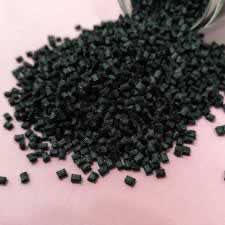
Product description
Glass fiber reinforced injection moulding grade with improved flame retardance and enhanced long-term stability. Flame retardant based on red phosphorus; outstanding mechanical and electrical properties.

Physical form and storage
Ultramid is supplied dry and ready to use in moisture-proof packaging in the form of cylindrical or flat pellets. Its bulk density is about 0.7g/cm³. Standard packs are the special 25kg bag and the 1000kg bulk container(octagonal IBC=intermediate bulk container made from corrugated board with a liner bag). Subject to agreement other forms of packaging and shipment in tankers by road or rail are also possible. All containers are tightly sealed and should be opened only immediately prior to processing. To ensure that the perfectly dry material delivered cannot absorb moisture from the air the containers must be stored in dry rooms and always carefully sealed again after portions of material have been withdrawn. Ultramid can be kept indefinitely in the undamaged bags. Experience has shown that products supplied in IBCs can be stored for about 3 months without any adverse effects on processing properties due to moisture absorption. Containers stored in cold rooms should be allowed to equilibrate to normal temperature so that no condensation forms on the pellets.

Product safety
Ultramid melts are thermally stable at the usual temperature for A, B, and C up to 310℃ and 350℃ for T and do not give rise to hazards due to molecular degradation or the evolution of gases and vapors. Like all thermoplastic polymers Ultramid decomposes on exposure to the excessive thermal load,e.g.when it is overheated, or as a result of cleaning by burning off. In such cases, gaseous decomposition products are formed. Decomposition accelerates above 310℃(T>350℃)approximately, the initial products formed being mainly carbon monoxide and ammonia, and caprolactam too in the case of Ultramid B. At temperatures above about 350℃(T>400℃)small quantities of pungent-smelling vapors of aldehydes, amines, and other nitrogenous decomposition products are also formed.
|